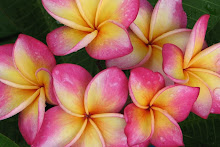About Tuberose
Tuberose provide blooms that
are among the most fragrant of all plants. The intoxicating fragrance will
leave a memorable impression. They bloom along 2 to 3-foot tall stems in nickel-sized to
quarter-size white flowers. While different varieties vary in bloom diameter
and the number of petals they all are long lasting with a strong fragrance.
Tuberose blooms become particularly fragrant in the evening and night.
Native to Central
America , these plants are now incorporated into ceromonies,
weddings and festivals around the globe. Once reserved for the royal families,
the royal gardens and those of high status by the ancient Mayans and Aztecs
they now are popularly incorporated into wedding bouquets where it is believed
to improve the mood of the Bride, preparing her for her wedding night.
During the Victorian Age in Europe , young ladies were warned not to go into the
garden at night where there were tuberose. In some Muslim countries it is
forbidden for women the breath the fragrance of the tuberose lest they yield to
romantic temptations.
 |
| Double Pearl Tuberose |
Outdoor Beds
Tuberose will not survive in
a bed that becomes water logged on occasion. However, the soil should not be
allowed to become completely dry. Therefore a balance of moisture retention and
good drainage is required.
Place your bulbs where they
will receive full sun or at least six-hours of direct sun. Find a location
where the soil drains well or prepare a high spot in the bed.
Amend the soil with the
addition of organic material to raise the level 2"-3" to improve the
drainage. Soil amendments of peat moss and ground bark provides a balance of
moisture retention and drainage. Coconut fiber or coor, when you can find it,
improves the drainage further and assures good air spaces in the mix. Both pine
bark and coor resist many pathogens.
Composted healthy plant
material feeds the soil as well as the plant. The addition of bone meal and
composted manure provide a long term extra kick.
In humid climates,
particularly those that leave heavy dew on plants overnight, the plants should
have enough spacing from other plants to allow good air circulation. A delay in
evaporation of water on the buds and blooms can lead to them browning –
preventing buds from opening or spoiling the blooms. This is no different than
roses.
Pots and Tubs
Fill your containers with good quality, well draining potting mix. Almost any commercially available potting medium will work but additions of finely crushed pine bark or coor will assure loose conditions. Make sure there are adequate drainage holes.
Place your containers where they will receive full sun. During blooming they can be located on the patio or locations where people sit or pass even if these locations have only partial sun. However, after a bloom cycle return the containers to full sun.
In our damp Houston
Watering and Feeding
After planting, water your
tuberose generously, soaking the soil. Water
regularly during the growing season whenever there is not adequate rain.
Tuberoses are heavy feeders during active growth and appreciate applications of
water soluble balance fertilizer with numbers like 8-8-8 or 15-15-15. As with
all heavy blooming plants, fertilizers that provide trace chemicals improve the
plants performance and health.
Discontinue fertilization
for the final two months of your growing season. Excess nitrogen containing
components encourage root and bulb rot of many plants when the plants are not
actively growing.
Blooming
Tuberose flower from
mid-June till October once well established. Once bud development begins an
optional application of a super bloom mix with numbers roughly 20-50-20 will
provide larger and more blooms. Blooming stems often will need support.
 |
| A wire stake with hoop providing support |
Individual picked blooms can
fill a room or a car with it’s fragrance that will linger even after the bloom
has been removed. When placed in a closet are among clothing in a drawer
overnight, the clothing will pick up the fragrance for the next day. An entire blooming stem can be cut for flower
arrangements.
End of Season
After blooming has finished for
the season leave the foliage in place; don't cut it off. The leaves will
gather sunlight and provide nourishment for next year's show. Water as needed. Leaves may be removed late in the
season, when they yellow.
Winter
In zones 8 and cooler, to save
your tuberose for next year, dig the bulbs carefully after the first frost. Let
them air dry for several days. Then store in a cool location in paper bags or
boxes filled with peat moss.
Even though the Houston
Containers with tuberose do
not have to have the bulbs lifted if the containers are moved indoors or the
garage to avoid the cold and wet of winter. They do not need light and water
during storage.
End

No comments:
Post a Comment